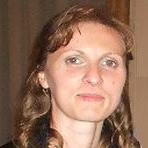Latest Scientific Discoveries in Polymer Membranes
A special issue of Membranes (ISSN 2077-0375). This special issue belongs to the section "Polymeric Membranes".
Deadline for manuscript submissions: closed (20 May 2023) | Viewed by 3175
Special Issue Editor
Interests: polymers; biopolymers; membranes; wastewater; pollutants; hybrid films; electrochemistry; corrosion; membrane separation processes
Special Issues, Collections and Topics in MDPI journals
Special Issue Information
Dear Colleagues,
We are pleased to invite you to submit your work to this Special Issue on “Latest Scientific Discoveries in Polymer Membranes”. The synthesis and applications of various polymeric membranes have grate attention in recent years due to some advantages such as high separation efficiency, high selectivity, feasibility, the ability to remove different contaminants or pollutants from water and wastewater, high flow at low pressures, fouling resistance, good mechanical and chemical stability.
This Special Issue of Membranes aims to cover recent advances in synthesis, characterization and applications of polymer membranes. The most used polymer membranes synthesis includes phase inversion, non-solvent induced phase separation, vapor-induced phase separation, electrospinning and sintering. The aim of this Special Issue is to open for a range of subjects: materials synthesis to the design and characterization of polymer membranes, the development of resistant, high conductive and selective polymer membranes, polymer membrane processes, and technologies with novel polymers integration. The establishing a relationship between the cleaning procedures and the changes in the mechanical, physicochemical properties of the polymer membranes, and their associated beneficial properties for various applications based on polymer membranes (e.g., electrodialysis, ultrafiltration, nanofiltration, microfiltration, osmosis, reverse osmosis, desalination of brackish or saline waters), will be gladly considered.
In this Special Issue, original research articles, full papers, communications and reviews that have not yet been published or that are not currently under review by other journals are invited.
Topics include but are not limited to:
- Advances in synthesis and preparation
- Membrane processes and technologies
- Selective separations
- Polymeric membranes in water and wastewater treatment
- Structure-property relationships of polymer membranes/membrane materials
- Characterization of materials by various techniques (e.g., FTIR, SEM, TEM, water contact angle, surface free energy, electrochemical impedance spectroscopy (EIS))
Dr. Simona Căprărescu
Guest Editor
Manuscript Submission Information
Manuscripts should be submitted online at www.mdpi.com by registering and logging in to this website. Once you are registered, click here to go to the submission form. Manuscripts can be submitted until the deadline. All submissions that pass pre-check are peer-reviewed. Accepted papers will be published continuously in the journal (as soon as accepted) and will be listed together on the special issue website. Research articles, review articles as well as short communications are invited. For planned papers, a title and short abstract (about 100 words) can be sent to the Editorial Office for announcement on this website.
Submitted manuscripts should not have been published previously, nor be under consideration for publication elsewhere (except conference proceedings papers). All manuscripts are thoroughly refereed through a single-blind peer-review process. A guide for authors and other relevant information for submission of manuscripts is available on the Instructions for Authors page. Membranes is an international peer-reviewed open access monthly journal published by MDPI.
Please visit the Instructions for Authors page before submitting a manuscript. The Article Processing Charge (APC) for publication in this open access journal is 2700 CHF (Swiss Francs). Submitted papers should be well formatted and use good English. Authors may use MDPI's English editing service prior to publication or during author revisions.
Keywords
- polymer membranes
- membrane processes
- characterization
- membrane performances
- functional membranes
- smart polymers
- selective separations






